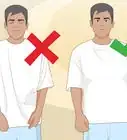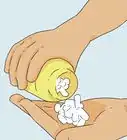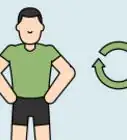This article was co-authored by Julian Arana, M.S.eD., NCSF-CPT. Julian Arana is a Personal Trainer and the Founder of B-Fit Training Studios, a personal training and wellness set of studios based in Miami, Florida. Julian has over 12 years of personal training and coaching experience. He is a certified personal trainer (CPT) by the National Council on Strength and Fitness (NCSF). He has a BS in Exercise Physiology from Florida International University and an MS in Exercise Physiology specializing in strength and conditioning from the University of Miami.
There are 7 references cited in this article, which can be found at the bottom of the page.
This article has been viewed 247,803 times.
Just because you don't have a pull up bar at home or access to a gym doesn't mean you can't do pull ups or work out your back! There are plenty of things you can find around your home or outside to do pull ups on instead of a bar. You can also do alternative exercises that work the same muscle groups as pull ups.
Steps
Finding Things to Use Instead of a Bar
-
1Do pull ups on a sturdy door as an alternative to a bar. Open a door in your home and wedge a towel or yoga mat underneath it to keep it from moving. Face the door, place a towel over the top of it, and reach your hands over the top of the door to so you have a wide grip.[1]
- It's very important that the door is strong and has strong hinges or you will end up damaging it. Don't use this method if you have doubts about the strength of the available doors in your house!
Tip: You can also invest in a home pull up bar that fits in a standard door frame. These types of bars usually offer multiple grip options and you can take them in and out of the door frame whenever you want without having to install any hardware.
-
2Use bars at a playground in a public park to do pull ups. Monkey bars are just pull up bars for kids! Use the bar of a swingset, or any other type of bar or wooden beam that is part of the playground, to do pull ups if there are no monkey bars.[2]
- Some public parks even have dedicated pull up bars set up. Ask around in your area to see if anyone knows where you can find some.
Tip: Workout gloves are a good accessory to have when you are looking for things to do pull ups on outside. They will help you grip onto things and protect your hands from rough surfaces like wood.
Advertisement -
3Grab a tree branch to do pull ups if you can't find a playground with bars. Look for trees with low, sturdy branches that you can reach to do pull ups. Stand underneath the branch and grab it (jump if you need to!) with a wide overhand grip and start doing pull ups.[3]
- Find trees that have branches of different girths to add variation to your pull ups and tone different muscles.
- Make sure that the branches you use are thick enough and strong enough to support your bodyweight so they don't snap as you do pull ups.
-
4Find a fence that is smooth enough to drag your knees along to do pull ups. A strong fence with a top you can grip onto is also a functional way to do pull ups outside. Your knees will most likely drag along the fence while you do them, so make sure it doesn't have a rough wood surface that will give you cuts or slivers.[4]
- An advantage of this method is that since your legs will be against the fence you can't swing them to help you do the pull ups. This will force your back muscles to do all the work.
Doing Alternative Exercises
-
1Wrap a towel around both sides of a door handle to do pull ins.[5] Place a towel or yoga mat underneath an open door to hold it in place. Wrap a towel around a post or sturdy railing, and use the ends of the towel to pull yourself in towards the edge of the door with a rowing motion.[6]
- Squat down in a half sitting position and extend your arms straight while holding the ends of the towel to get into the starting position. Pull your upper body towards the door while keeping your back straight to do a row that works your back muscles.
- You can also do a similar exercise by wrapping an exercise band around the doorknobs instead of a towel. Pull the ends of the band towards you instead of moving your body towards the door.
- All types of rowing exercises will work your back and bicep muscles in a similar way to pull ups.
-
2Grip the edge of a table from underneath to do inverted rows.[7] Lay underneath a table with your shoulders right under the edge of the table. Grab the edge of the table with both hands and a wide grip and pull your upper body as high as you can go to work out your back and biceps.[8]
- You can do this either with an overhand or underhand grip. To use an underhand grip, start with your head under the table and your lower body outside. To use an overhand grip, stick your legs and body under the table and keep your head outside.
- Make sure that the table is heavy enough that you won't flip it over when you pull your bodyweight up.
-
3Lay a broomstick across 2 chairs to make a row bar. Place 2 chairs of the same size wide enough apart that you can lie down between them and place a broomstick across them. Lie underneath the broomstick and pull your upper body up towards it to do a row that works your back and biceps like pull ups.[9]
- Make sure that the broomstick won't roll around on the chairs while you do the rows. You can place towels on the chairs to give them more traction.
-
4Find a railing you can use to do inverted rows.[10] Low hand railings are another way to improvise and do an alternative back exercise. Lie under the railing with your shoulders underneath it and pull your upper body up towards the railing with an overhand or underhand grip.[11]
- Try to find a railing that has flat ground underneath it, as opposed to slanted ground. If you can't, then alternate the way your body is facing for each set of rows to work your back evenly.
- You can also look for outdoor picnic benches to use for doing rows.
-
5Do bent-over dumbbell rows to work out your back and biceps another way. Put 1 knee and 1 hand on a bench so your back is horizontal and straight. Hold a dumbbell in the other hand and pull it up towards the side of your chest like you are starting a lawn mower.[12]
- It's important to keep your back straight and supported by a hand and a knee during this exercise so you don't strain it. When done correctly with good form, bent-over dumbbell rows will work many of the same back and arm muscles as a pull up.[13]
-
6Do bicep barbell or dumbbell curls if you just want to focus on your biceps. Grip a barbell with both hands, or a hold a dumbbell in each hand, and let your arms hang down. Curl the barbell or dumbbells up towards your chest, with the palms of your hands facing you, to perform this bicep isolation exercise.[14]
- There are many variations of bicep curls you can do including barbell preacher curls, incline dumbbell curls, concentrated one-arm curls, hammer curls, and alternating one-arm curls.
Tip: If you're going to buy 1 set of workout equipment for home, then make it a set of dumbbells or a barbell with plates. You will be able to adapt these pieces of equipment to do many different exercises.
Expert Q&A
-
QuestionWhat exercises can I do that are similar to pull-ups?
 Julian Arana, M.S.eD., NCSF-CPTJulian Arana is a Personal Trainer and the Founder of B-Fit Training Studios, a personal training and wellness set of studios based in Miami, Florida. Julian has over 12 years of personal training and coaching experience. He is a certified personal trainer (CPT) by the National Council on Strength and Fitness (NCSF). He has a BS in Exercise Physiology from Florida International University and an MS in Exercise Physiology specializing in strength and conditioning from the University of Miami.
Julian Arana, M.S.eD., NCSF-CPTJulian Arana is a Personal Trainer and the Founder of B-Fit Training Studios, a personal training and wellness set of studios based in Miami, Florida. Julian has over 12 years of personal training and coaching experience. He is a certified personal trainer (CPT) by the National Council on Strength and Fitness (NCSF). He has a BS in Exercise Physiology from Florida International University and an MS in Exercise Physiology specializing in strength and conditioning from the University of Miami.
Certified Personal Trainer If you don't want to do pull-ups, try doing lat pull-downs, pull-ins, inverted rows, or dumbbell rows instead.
If you don't want to do pull-ups, try doing lat pull-downs, pull-ins, inverted rows, or dumbbell rows instead.
References
- ↑ https://www.youtube.com/watch?v=vGAK2-_kn1U&feature=youtu.be&t=210
- ↑ https://evilcyber.com/fitness/pullups-without-bar/
- ↑ https://www.sportskeeda.com/bodybuilding/how-to-do-pull-ups-without-a-bar
- ↑ https://evilcyber.com/fitness/pullups-without-bar/
- ↑ Julian Arana, M.S.eD., NCSF-CPT. Certified Personal Trainer. Expert Interview. 19 May 2020.
- ↑ https://www.youtube.com/watch?v=vGAK2-_kn1U&feature=youtu.be&t=119
- ↑ Julian Arana, M.S.eD., NCSF-CPT. Certified Personal Trainer. Expert Interview. 19 May 2020.
- ↑ https://www.youtube.com/watch?v=vGAK2-_kn1U&feature=youtu.be&t=304
- ↑ https://www.sportskeeda.com/bodybuilding/how-to-do-pull-ups-without-a-bar
- ↑ Julian Arana, M.S.eD., NCSF-CPT. Certified Personal Trainer. Expert Interview. 19 May 2020.
- ↑ https://www.sportskeeda.com/bodybuilding/how-to-do-pull-ups-without-a-bar
- ↑ https://www.military.com/military-fitness/workouts/pull-up-alternatives
- ↑ Julian Arana, M.S.eD., NCSF-CPT. Certified Personal Trainer. Expert Interview. 19 May 2020.
- ↑ https://www.military.com/military-fitness/workouts/pull-up-alternatives



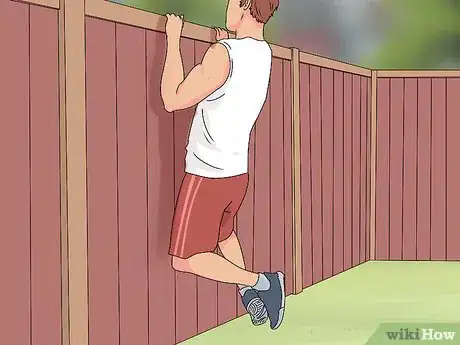









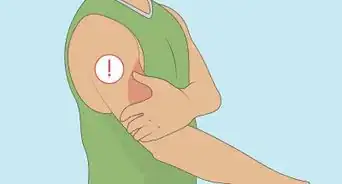
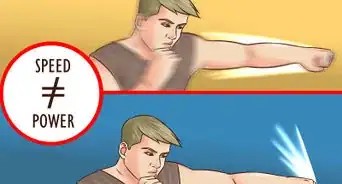
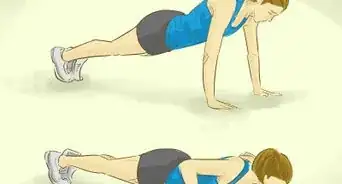
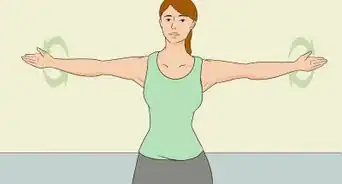
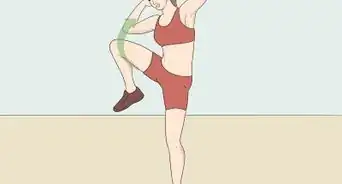
-Step-10-Version-5.webp)








